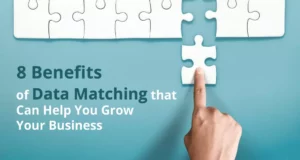
Data Standardization Guide: Types, Benefits, and Process
Poor data standardization is a hidden profit killer. When customer names, products, or sales figures appear in different formats across systems (and often even within

Poor data standardization is a hidden profit killer. When customer names, products, or sales figures appear in different formats across systems (and often even within

With 89% of employees reporting sifting through up to six data sources daily to find relevant information, data sprawl emerges as a major culprit undermining

Of U.S. healthcare providers have incurred an adverse event within the last two years due to a patient matching issue. Survey from eHI and NextGate

We have delivered data quality solutions to Fortune 500 companies for over a decade. We often come across clients who are confused about how to

With hundreds of data sources and an average of 259 distinct software applications and systems, organizations are drowning in information and tools. This, coupled with

Today, business growth greatly depends on how effectively you can harness information. And while the average number of applications businesses use increased from 843 in

Imagine a doctor trying to retrieve a patient’s medical history, but instead of one accurate record, they find three profiles – one with an outdated

Data compliance standards (such as GDPR, HIPAA, and CCPA, etc.) are compelling corporations to revisit and revise their data management strategies. Although each standard enforces

Address data is semi-structured, making it one of the most challenging components in a data matching activity. For long now, manual data matching methods including

As data undergoes a paradigm shift, so do the systems, processes, and approaches involved. Legacy systems are dying. Batch ETL pipelines are slowly becoming obsolete. Ownership is moving away from IT to

Let’s face it – it’s embarrassing when you send out mails to the wrong audience set. More so, it is costly. Millions of dollars go

States across the U.S. are ramping up their data efforts in deploying statewide longitudinal data systems (SLDS) that contain information on public school students. The